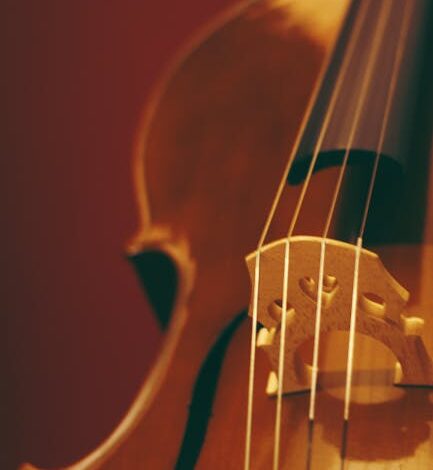Best Free Strings Vst

So, you’re looking to add some lush, dramatic, or maybe even spooky strings to your music without spending a dime? You’ve come to the right place! Finding good, *free* string VSTs can feel like searching for a needle in a haystack. There are a lot of options out there, but not all of them are created equal. As someone who’s spent countless hours tweaking sounds in my own home studio, I’m going to share some of the best free string VST plugins I’ve found. Get ready to elevate your tracks!
Before we dive in, let’s quickly talk about what makes a good string VST. It’s not just about sounding like a real orchestra (although that’s a plus!). It’s about playability, the range of sounds you can get, and how well it fits into your mix. A great VST should be easy to use, even if you’re a beginner, and shouldn’t hog all your computer’s resources. Plus, a variety of articulations (like staccato, legato, pizzicato) really opens up your creative possibilities.

My Top Picks for Free String VSTs
Alright, let’s get to the good stuff! Here are a few free string VSTs that I’ve personally found to be incredibly useful and inspiring:
Spitfire Audio LABS Strings: You probably saw this one coming. Spitfire Audio is known for their amazing, high-quality orchestral libraries, and their LABS series is a treasure trove of free instruments. The LABS Strings are absolutely fantastic. They have a beautiful, cinematic sound that’s perfect for adding emotion and depth to your tracks. The interface is super simple, which makes it easy to get started. While it might not have every articulation under the sun, the core sound is so good that it’s a must-have for any producer.
DSK Strings: DSK Strings offers a collection of different string sections, including violins, violas, cellos, and basses. It’s a relatively lightweight plugin, meaning it won’t drain your CPU. The sound quality is decent, especially considering it’s free, and it provides a good starting point for creating string arrangements. It’s a great option if you’re looking for something simple and straightforward.
Sonatina Symphonic Orchestra: This is a complete orchestral library, not just strings, but the string sections are quite good. Sonatina is a bit older, but it’s still a very capable and versatile option. Because it’s a full orchestra, you’ll need a sampler like Kontakt (the full version, not the free Player, as Sonatina isn’t officially a “Kontakt” library) or Sforzando to use it. But if you have one, you’ll unlock a lot of potential. The sound is more on the “realistic” side, so it’s well-suited for orchestral compositions and more traditional styles.
Versilian Studios Chamber Orchestra 2 Community Edition (VSCO 2 CE): Similar to Sonatina, VSCO 2 CE is a full orchestral library offered in a community edition format. It has a unique, slightly “vintage” sound that some people really love. The string sections are well-sampled and offer a good level of control. Again, you’ll need a sampler to use this one, but it’s a powerful tool if you’re looking for a full orchestra at no cost.
Orchestral Tools Layers: From a company known for high-end orchestral sample libraries comes Layers. It’s their entry into the free world. While limited to a single combined string section, the quality is top-notch for a free VST. It’s incredibly easy to use and sounds fantastic right out of the box. Great for adding instant cinematic flair to your compositions.
Ample Guitar M Lite II (as a string substitute): Okay, this is a bit of a sneaky pick! Ample Guitar M Lite II is technically a guitar VST, but with some creative tweaking, you can get some surprisingly good string sounds out of it. By using the MIDI input to control the pitch and velocity, and then messing with the EQ and effects, you can create bowed string-like textures that work well in certain contexts. It’s a fun way to experiment and get a unique sound.
Tips for Getting the Most Out of Free String VSTs
Even the best free VSTs can sound a bit “meh” if you don’t know how to use them properly. Here are a few tips to help you get the most out of your free string instruments:
- Layering: Don’t be afraid to layer different string VSTs to create a richer, fuller sound. Try combining a lush, cinematic string VST with a more realistic one to get the best of both worlds.
- EQ: Use EQ to shape the sound of your strings and make them sit well in the mix. Cut out any muddiness in the low end and boost the frequencies that make the strings sound bright and airy.
- Reverb: Reverb is your friend when it comes to strings. Add a touch of reverb to create a sense of space and depth. Experiment with different reverb types and settings to find what works best for your track.
- Automation: Use automation to add movement and dynamics to your string parts. Automate parameters like volume, pan, and filter cutoff to create interesting effects and keep the listener engaged.
- Experiment with articulations: Most string VSTs come with different articulations, such as legato, staccato, and pizzicato. Use these articulations to add variety and realism to your string arrangements.
Are There Any Downsides to Free String VSTs?
Of course, there are some limitations to free string VSTs. Generally, they might not sound as realistic as paid libraries, and they may have fewer articulations and features. But that doesn’t mean they’re not useful! They’re a great way to get started with string arranging and experiment with different sounds without breaking the bank. And sometimes, the limitations can actually spark creativity!
Free vs. Paid String VSTs: What’s the Difference?
The main difference between free and paid string VSTs boils down to sound quality, features, and the amount of control you have. Paid libraries are typically recorded with better equipment and feature more detailed sampling, resulting in a more realistic and nuanced sound. They also tend to offer a wider range of articulations, effects, and customization options. However, for beginners or those on a tight budget, free string VSTs are a fantastic starting point. As your skills and needs grow, you can always upgrade to a paid library later on.
FAQ
Are free string VSTs good enough for professional use?
It depends on the specific VST and the context of your project. Some free string VSTs, like Spitfire Audio LABS Strings and Orchestral Tools Layers, are surprisingly good and can definitely be used in professional productions. However, for projects that require a high degree of realism and detail, a paid library might be a better choice.
What is a VST?
VST stands for Virtual Studio Technology. It’s a software interface that allows you to use virtual instruments and effects plugins within your digital audio workstation (DAW). Think of it as a way to add new sounds and processing capabilities to your music production setup.
Do I need special software to use string VSTs?
Yes, you’ll need a DAW (Digital Audio Workstation) to use string VSTs. Popular DAWs include Ableton Live, Logic Pro X, FL Studio, and GarageBand. You’ll also need to make sure that your DAW is configured to scan for and recognize VST plugins.
Where can I find more free VST plugins?
There are many websites that offer free VST plugins. Some popular options include Plugin Boutique, VST4FREE, and Bedroom Producers Blog. Be sure to download plugins from reputable sources to avoid malware.
So there you have it – my recommendations for the best free string VSTs! Remember, the best VST is the one that inspires you and helps you create the music you want to make. Don’t be afraid to experiment and try out different options until you find what works best for you. Happy music making!



